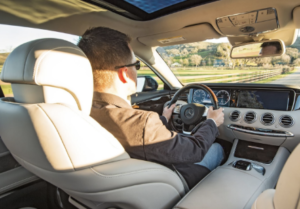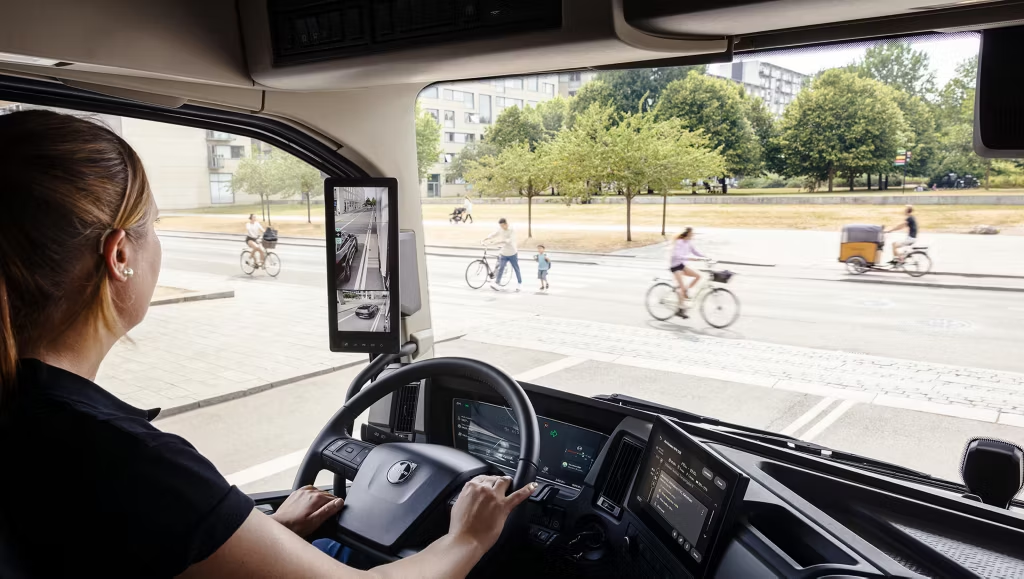The ability to drive defensively is a crucial talent that every motorist ought to acquire in order to guarantee their own safety while driving. It requires being aware of potential dangers and adopting preventative steps in order to limit the likelihood of accidents occurring. It is possible to become a more careful, prepared, and responsible driver by gaining an understanding of the various sorts of defensive driving strategies that are available. The following is a list of important categories of defensive driving:
1. Situational Awareness

Definition and Importance
In the context of driving, situational awareness refers to the state of being completely aware of one’s surroundings. Constantly scanning the area, comprehending the dynamics of the traffic around you, and predicting potential dangers are all required for this. This form of defensive driving is essential because it enables you to react rapidly to shifting situations and prevents accidents from occurring.
Key Components of Situational Awareness
- Observing Traffic Patterns: Pay attention to the flow of traffic, noting any sudden stops, slowdowns, or erratic behavior from other drivers.
- Identifying Potential Hazards: Look out for potential hazards such as pedestrians, cyclists, animals, and road debris.
- Monitoring Road Conditions: Be aware of changing road conditions, including weather, construction zones, and detours.
- Using Mirrors Effectively: Regularly check your rearview and side mirrors to stay informed about vehicles around you.
Practical Tips for Improving Situational Awareness
- Stay Focused: Avoid distractions such as mobile phones, eating, or adjusting the radio while driving.
- Keep a Safe Distance: Maintain a safe following distance from the vehicle in front of you to allow ample time to react.
- Be Predictable: Signal your intentions clearly when changing lanes or making turns to help other drivers anticipate your actions.
- Stay Calm: Maintain composure in stressful situations to make better decisions.
2. Anticipatory Driving

Definition and Importance
Anticipatory driving involves predicting potential hazards and taking preemptive actions to avoid them. By anticipating the actions of other road users, you can make informed decisions that enhance safety. This proactive approach is vital for preventing accidents caused by unexpected events.
Key Components of Anticipatory Driving
- Predicting Driver Behavior: Anticipate the actions of other drivers, such as sudden lane changes, braking, or merging.
- Recognizing Warning Signs: Be aware of subtle cues that may indicate a potential hazard, such as a car drifting within its lane or brake lights ahead.
- Preparing for the Unexpected: Always be ready for unexpected situations, such as a child running into the road or a car running a red light.
Practical Tips for Practicing Anticipatory Driving
- Look Ahead: Scan the road far ahead to identify potential hazards early.
- Read the Road: Pay attention to road signs, traffic signals, and pavement markings to anticipate changes in traffic flow.
- Adapt Your Speed: Adjust your speed based on road conditions, traffic density, and visibility.
- Plan Your Route: Familiarize yourself with your route and potential hazards along the way.
3. Vehicle Control

Definition and Importance
Vehicle control refers to maintaining complete control over your vehicle at all times. This type of defensive driving is essential for maneuvering safely and effectively in various driving conditions. Proper vehicle control helps you respond to emergencies and avoid accidents.
Key Components of Vehicle Control
- Speed Management: Adjust your speed to match road conditions, traffic flow, and legal speed limits.
- Steering Techniques: Use proper steering techniques to maintain control of your vehicle, especially during turns and lane changes.
- Braking Strategies: Understand how to use your brakes effectively, including techniques such as threshold braking and anti-lock braking systems (ABS).
- Acceleration Control: Apply smooth and controlled acceleration to maintain traction and stability.
Practical Tips for Enhancing Vehicle Control
- Practice Regularly: Regular practice helps you become more comfortable and confident in handling your vehicle.
- Maintain Your Vehicle: Ensure your vehicle is in good condition, with properly inflated tires, functional brakes, and responsive steering.
- Use Both Hands: Keep both hands on the steering wheel in the 9 and 3 o’clock positions for maximum control.
- Avoid Sudden Movements: Make smooth and gradual movements with the steering wheel, accelerator, and brakes.
4. Managing Visibility

Definition and Importance
Managing visibility involves ensuring that you have a clear view of the road and that other drivers can see you. Good visibility is crucial for making informed decisions and reacting promptly to potential hazards. This type of defensive driving enhances safety, especially in adverse weather conditions or low-light situations.
Key Components of Managing Visibility
- Proper Lighting: Use your vehicle’s headlights, taillights, and turn signals appropriately to ensure you are visible to others.
- Windshield and Windows: Keep your windshield and windows clean and free of obstructions to maintain clear visibility.
- Mirrors: Adjust and use your mirrors effectively to monitor your surroundings.
- Weather Adaptations: Adapt your driving to different weather conditions, such as using fog lights in foggy conditions or slowing down in heavy rain.
Practical Tips for Managing Visibility
- Regular Maintenance: Ensure your vehicle’s lighting system is in good working order and replace bulbs as needed.
- Clean Windows: Regularly clean your windshield, windows, and mirrors to prevent dirt and grime from obstructing your view.
- Use Wipers and Defoggers: Use your windshield wipers and defoggers to maintain clear visibility in rainy or humid conditions.
- Reduce Glare: Use your sun visor and wear sunglasses to reduce glare from the sun.
5. Adapting to Road Conditions

Definition and Importance
Adapting to road conditions involves adjusting your driving style to match the current state of the road. This type of defensive driving is essential for maintaining control and ensuring safety in varying environments. Different road conditions require different approaches to driving.
Key Components of Adapting to Road Conditions
- Weather Conditions: Adapt your driving to different weather conditions, such as rain, snow, fog, and ice.
- Road Surfaces: Be aware of different road surfaces, such as gravel, asphalt, and concrete, and adjust your driving accordingly.
- Traffic Density: Adjust your driving based on traffic density, whether it’s heavy traffic in urban areas or light traffic on rural roads.
- Road Hazards: Be prepared for road hazards such as potholes, debris, and animals crossing the road.
Practical Tips for Adapting to Road Conditions
- Slow Down: Reduce your speed in adverse weather conditions or on unfamiliar roads.
- Increase Following Distance: Maintain a greater following distance in poor weather or on slippery roads to allow more time to react.
- Use Appropriate Gear: Use lower gears on steep inclines or declines to maintain control and prevent your brakes from overheating.
- Stay Alert: Stay vigilant and focused, especially in challenging driving conditions, to quickly respond to potential hazards.
6. Communicating with Other Drivers

Definition and Importance
Communicating with other drivers involves using various signals and gestures to convey your intentions on the road. This type of defensive driving helps create a predictable driving environment, reducing the likelihood of misunderstandings and accidents.
Key Components of Communicating with Other Drivers
- Turn Signals: Use turn signals to indicate your intentions to turn or change lanes.
- Brake Lights: Tap your brake lights to signal slowing down or stopping.
- Hand Signals: Use hand signals if your vehicle’s lights are not functioning or to reinforce your intentions.
- Horn: Use your horn sparingly to alert other drivers to your presence or potential hazards.
Practical Tips for Effective Communication
- Signal Early: Use your turn signals well in advance of your intended action to give other drivers time to react.
- Use Hazard Lights: Activate your hazard lights when you need to stop unexpectedly or when driving slowly in hazardous conditions.
- Make Eye Contact: Make eye contact with other drivers at intersections or when merging to ensure they see you.
- Avoid Aggressive Gestures: Keep your gestures polite and non-aggressive to prevent road rage incidents.
7. Risk Management

Definition and Importance
Risk management involves assessing potential risks on the road and taking steps to minimize them. This type of defensive driving is essential for making informed decisions that prioritize safety. Effective risk management helps prevent accidents and reduces the severity of potential incidents.
Key Components of Risk Management
- Risk Assessment: Continuously assess potential risks in your driving environment.
- Decision Making: Make informed decisions based on your risk assessment, such as slowing down or taking an alternate route.
- Contingency Planning: Have contingency plans for different scenarios, such as knowing alternative routes or emergency procedures.
- Avoiding High-Risk Situations: Avoid situations that increase risk, such as driving in severe weather or during peak traffic hours.
Practical Tips for Effective Risk Management
- Plan Ahead: Plan your route in advance and check for potential hazards, such as construction zones or adverse weather.
- Stay Informed: Stay informed about current road conditions and traffic updates through apps, radio, or navigation systems.
- Practice Defensive Habits: Develop and practice defensive driving habits, such as maintaining a safe following distance and being aware of your surroundings.
- Stay Calm: Stay calm and composed, especially in high-risk situations, to make better decisions.
8. Defensive Driving Courses

Definition and Importance
Defensive driving courses provide structured training to help drivers develop and enhance their defensive driving skills. These courses are important because they offer practical knowledge and techniques that can significantly improve road safety.
Key Components of Defensive Driving Courses
- Classroom Instruction: Courses often include classroom instruction on defensive driving principles and traffic laws.
- Practical Training: Practical training sessions allow drivers to practice defensive driving techniques in a controlled environment.
- Scenario-Based Learning: Courses may include scenario-based learning to help drivers understand how to respond to different driving situations.
- Certification: Many defensive driving courses offer certification, which can sometimes lead to insurance discounts.
Benefits of Defensive Driving Courses
- Enhanced Skills: Defensive driving courses help enhance driving skills and knowledge.
- Increased Confidence: Completing a course can increase a driver’s confidence on the road.
- Insurance Discounts: Many insurance companies offer discounts to drivers who have completed a defensive driving course.
- Improved Safety: Defensive driving courses promote safer driving habits, reducing the likelihood of accidents.
Conclusion
Defensive driving encompasses various techniques and strategies aimed at ensuring safety on the road. By understanding and practicing situational awareness, anticipatory driving, vehicle control, managing visibility, adapting to road conditions, communicating with other drivers, risk management, and considering defensive driving courses, you can become a more responsible and cautious driver. Each type of defensive driving plays a crucial role in preventing accidents and promoting a safer driving environment for everyone. Investing time and effort in mastering these skills is a valuable commitment to your safety and the safety of others on the road.